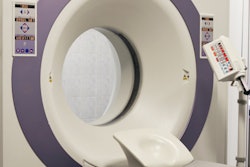
Mitigated multiple procedure payment reduction (MPPR) cuts in 2017 could restore up to $64 million in Medicare professional payments to radiologists each year, according to a study published in the March issue of the Journal of the American College of Radiology.
The finding is good news not only for radiologists but also for their patients, as Medicare payment cuts can adversely affect patient access, quality of care, and mortality when hospitals cut services and physicians take on fewer Medicare patients in response to financial pressures, wrote the team led by Dr. Gelareh Sadigh of Emory University School of Medicine.
"Prior work in a variety of settings has shown that patient access to necessary services has been or could be compromised by Medicare and Medicaid payment cuts," the group wrote. "In fact, in response to a number of proposed ... cuts, many physicians have indicated a decreased likelihood of accepting new Medicare patients. If these phenomena were to apply to radiologists, such payment cuts could eventually lead to decreased access to advanced imaging by Medicare beneficiaries, particularly those underserved in rural and inner-city urban areas."
Disproportionate effect
The U.S. Centers for Medicare and Medicaid Services (CMS) first implemented its MPPR initiative in 2006, which had a disproportionate effect on medical imaging, Sadigh and colleagues wrote.
The policy resulted in a 25% reduction in technical component payments for advanced diagnostic imaging (CT and MRI) of contiguous body parts (head and neck, abdomen, and pelvis) performed on the same patient on the same day. The passage of the Affordable Care Act (ACA) in 2010 expanded this reduction in technical component payments to 50%, and a year later, the policy was further changed to cut technical component payments for advanced imaging on noncontiguous body parts across different modalities (JACR, March 2018, Vol. 15:3PA, pp. 390-395).
Later in 2011, the Medicare Payment Advisory Commission (MedPAC) recommended that Congress expand the MPPR beyond the technical component and reduce professional component payments by 50% as well; in 2012, this policy was rolled back to 25%. But in 2017, in part due to the American College of Radiology's (ACR) advocacy efforts, Congress reduced the professional component MPPR from 25% to 5%.
So how might this rollback of the professional component MPPR affect payments restored to the specialty? To find out, Sadigh and colleagues used CMS physician data from 2012 to 2014 to identify individual provider MPPR-eligible services for radiologists. They then compared actual payments with Medicare Physician Fee Schedule reimbursement rates to determine MPPR-discounted services. They also calculated MPPR-affected services and average radiologist annual MPPR discounts to estimate individual radiologist payment restoration as the result of ACR advocacy.
Between 2012 and 2014, a mean of 803 to 836 advanced imaging services per radiologist were potentially affected by individual provider MPPR discounting, Sadigh and colleagues wrote. Of these, 23% were actually discounted by individual provider MPPR, resulting in approximately $2,524 to $2,893, on average, in lost income per radiologist per year.
| Effects of professional component MPPR cuts on radiology services, 2012-2014 | |||
| 2012 | 2013 | 2014 | |
| Mean No. of services per radiologist affected by MPPR | 946 | 954 | 978 |
| Percent of professional component services | 84.9% | 85.3% | 85.5% |
| Average total professional services affected by MPPR | 803 | 813 | 836 |
| Average annual payment reduction per radiologist from individual component of MPPR | $2,524.28 | $2,614.75 | $2,892.62 |
The researchers estimated that the January 2017 MPPR rollback from 25% to 5% should increase radiologist payments from Medicare for the individual component by more than $2,000; with an estimated 27,294 to 27,655 affected radiologists per year, restored annual income would be $55 million to $64 million, they wrote.
ACR's effect
Coordinated advocacy efforts by the ACR influenced the passage of HR 2029, the Consolidated Appropriations Act of 2016, which included provisions to roll back the 25% professional component MPPR to 5%.
"Although a variety of political, legislative, and regulatory changes were all affecting healthcare payment system changes simultaneously, we believe that the ACR's activities were extremely influential in bringing about the MPPR rollback," Sadigh and colleagues concluded.




















